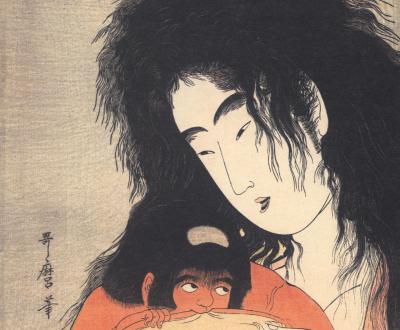Yokai: Introducing Spirits of the Japanese Folklore
👻 The Parade of Monsters and Ghosts
Yokai are supernatural creatures of the Japanese folklore, sometimes also considered as specters or demons. They come in various appearances, and can look like animals, humans and even objects. Those who encounter yokai can be affected by their actions negatively as well as positively. Their strange presence symbolizes inexplicable phenomenons.
Folklore, as much as rituals, can help explain natural phenomenons and maintain the social order. Tales, legends and all kinds of moralistic narrative help explain all the things that do not function as expected in the society or in nature. As a matter of fact, raising fear or belief is sometimes necessary to have people obey. Preventing children from walking alone or being too trusting with strangers are among the interpretations of the Little Red Riding Hood’s purpose for example.
In the same idea, let us discover a few yokai 妖怪 and other frightening Japanese spirits. The Japanese are certainly peerless when it comes to creating chilling stories from very simple elements.
Akateko (赤手児)
Akateko (赤 red, 手 hand, 児 small child) is a…child’s red hand hanging from a branch by a ligament – but nobody actually knows what the hand is attached to. Originating from Aomori area in the north of Honshu, the hand falls from the tree when someone draws near. Akateko brings bad luck for the one who encountered it: it can be a simple tripping or a high fever. In any case, they do not come out unscathed.
Taka Onna (たか女)
Taka Onna たか女 is a spirit that looks like an ordinary woman, but can stretch up to the point of looking like a snake. It is renowned for using this ability to stare into people’s houses through the window. It is also said that it only wants to observe people who are jealous and women who are not attractive, who they follow or trick to get revenge on them. Other legends say that Taka Onna only stalk people going to brothels.
Onmoraki (陰摩羅鬼)
Onmoraki 陰摩羅鬼 is born from a deceased who did not have proper funerals. Despite the body being buried, the deceased spirit seeks to avenge the neglect it suffered. This yokai is powerful enough to frighten superstitious priests, who take great care of each funerals. Well, nobody is willing to have a half-bird half human demon shrieking around one’s ears.
Kubikajiri (首かじり)
Kubikajiri 首かじり is a headless monster that eats people’s or corpses’ heads. They wander in cemeteries at night, and they can be mistaken for an ordinary man until one notices that the approaching silhouette is strange and does not have a head. It reeks of blood and won’t stop until it finds its own head.
Ikiryo (生霊)
Ikiryo 生霊 is like the doppelganger of a person who felt such a strong emotion that their soul left their body and appeared in an ethereal form. It haunts places or people, and wanders until its owner finds peace, only then can it come back to the body. The phenomenon resembles a dissociative disorder (depersonalization), and blaming a ghost helped explain all abnormal moves of the body, justify inexplicable emotions or compulsions, or when the presence of someone else was felt.
Yama Uba (山姥)
Yama Uba 山姥 resembles a witch of the old western folktales: it changes appearance to trick those it meets on the road in the forest. Old, disheveled and wearing a worn down kimono 👘, it eats its victims and is essentially malevolent.
Ittan Momen (一反木綿)
Ittan Momen 一反木綿 is not a human-shaped yokai. It is a long flying piece of cotton, that wraps itself on an individual’s neck and strangle them like a boa. Its encounter is almost always deadly for the victim, who, at best would have been suffocating for a long time before escaping.
Ushi Oni (牛鬼)
Ushi Oni 牛鬼 is a demon looking like a spider crab: with long and pointy legs and a shell resembling to a man’s face. It lives in water and attracts people walking on the seaside to kill them. It is very cruel, and can attack in group, spread diseases and even wreak havoc places near its hideout.
Japanese folklore is rich of many more supernatural creatures than the European’s. It is maintained alive by the popular culture that enjoys creating new yokai, finding inspiration in religions or in other countries.

